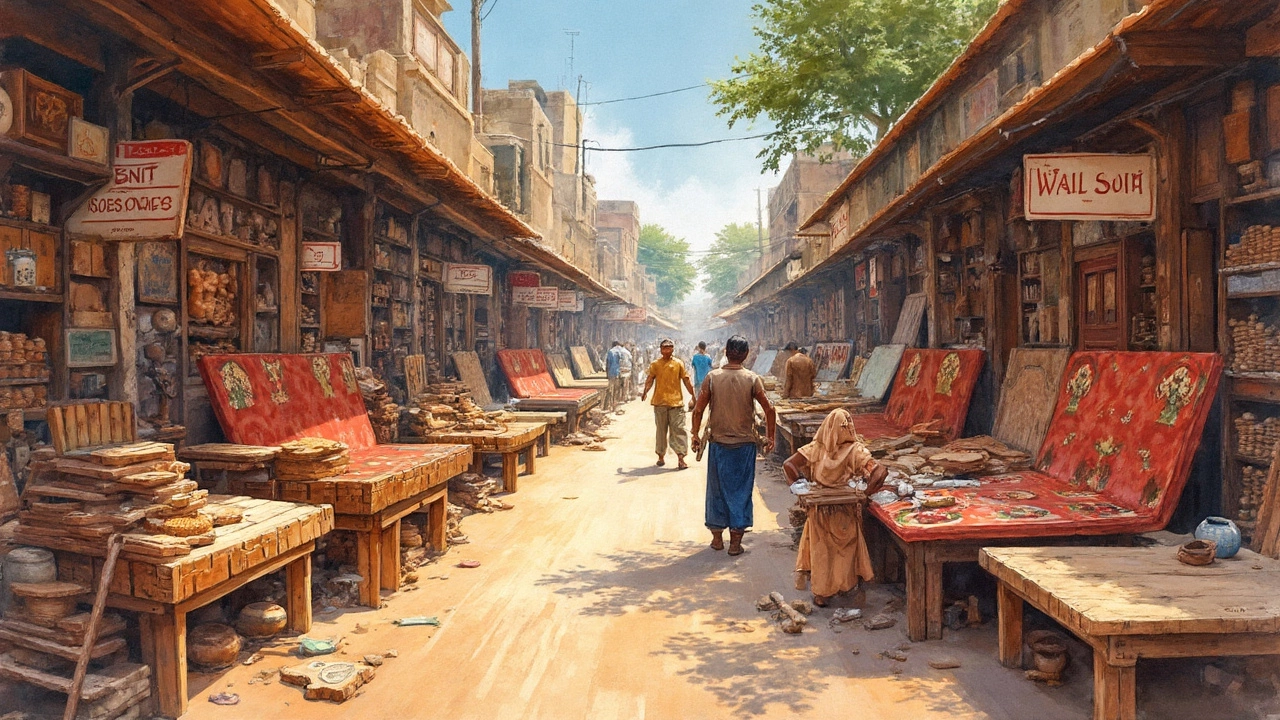Sofa Wood India: What to Choose, How to Spot Quality, and What’s Trending
Ever wonder why some sofas look brand new after years while others show cracks and scratches? The secret is usually the wood. In India, a few species dominate the sofa market, and knowing the basics can save you time, money, and headaches.
Top Wood Types for Indian Sofas
Teak is the gold standard. It’s dense, resists moisture, and ages to a beautiful gray patina if you let it. Because it’s sturdy, teak sofas stay firm even in bustling homes. The downside? It costs more and can be hard to find in small cuts.
Sheesham (Indian rosewood) is the next favorite. It’s slightly lighter than teak, has a warm golden hue, and still holds up well under daily use. Most mid‑range Indian furniture brands use sheesham because it offers a good balance of strength and price.
Mango wood has gained popularity for its eco‑friendly vibe. The wood comes from mango trees that have stopped fruiting, turning a waste stream into furniture. Mango wood is softer than teak, so it’s great for stylish sofas that won’t be slammed daily.
Acacia and Bamboo are emerging as sustainable options. Acacia is tough and has a distinct grain pattern, while engineered bamboo panels combine strength with a modern look. Both are lighter, so they’re easier to move.
How to Spot Good Quality Sofa Wood
First, feel the grain. High‑quality wood feels tight and even; loose or fuzzy grain often means cheap plywood isn’t properly veneered. Second, check for knots. Small, tight knots are fine, but large cracks can weaken the frame.
Third, look at the finish. A clear, smooth finish indicates the wood was sanded well and treated with proper varnish or oil. If the surface feels sticky or uneven, the coating might wear off quickly.
Finally, give the legs a gentle shake. A sturdy sofa frame won’t wiggle. If you hear creaking, the joints may be using weak dowels or hidden screws that can fail later.
When buying, ask the seller for the wood grade and source. Reputable dealers often provide a certificate showing the timber comes from sustainable forests. This helps you avoid illegal logging and supports greener practices.
Cost, Maintenance & Buying Tips
Teak sofas range from ₹30,000 to ₹80,000 per set, depending on design. Sheesham is usually ₹15,000‑₹40,000. Mango wood can be as low as ₹8,000 for a basic frame but may need extra care.
Maintenance is simple: wipe with a dry cloth, avoid harsh chemicals, and oil teak or sheesham once a year to keep the wood supple. For mango or bamboo, a light polish keeps the surface looking fresh.
If you shop online, read reviews for fit‑and‑finish details. Look for photos that show the wood grain up close. In stores, sit on the sofa and press the cushions; a solid feel means the frame is well‑built.
Trends in 2024‑2025 point toward mixed‑material sofas—wood frames paired with fabric or leather cushions in bold colors. Customers also love modular designs that let you rearrange pieces without losing stability.
Bottom line: pick the wood that matches your budget, lifestyle, and aesthetic. Teak for lifelong durability, sheesham for a nice balance, mango for eco‑conscious style, and newer options like acacia or bamboo for a fresh look. With these tips, you’ll pick a sofa that looks great and stands the test of time.

Best Wood for Sofas in India: A Practical Guide
Selecting the right wood for a sofa in India isn't just about aesthetics; it's about durability, cost, and longevity too. From the rich, sturdy teak to the budget-friendly neem, each type of wood brings different benefits to the table. Knowing your options and the properties of each wood can significantly influence the overall experience with your sofa. Consider the functionality and comfort aspects to make an informed choice that suits your lifestyle and budget.
